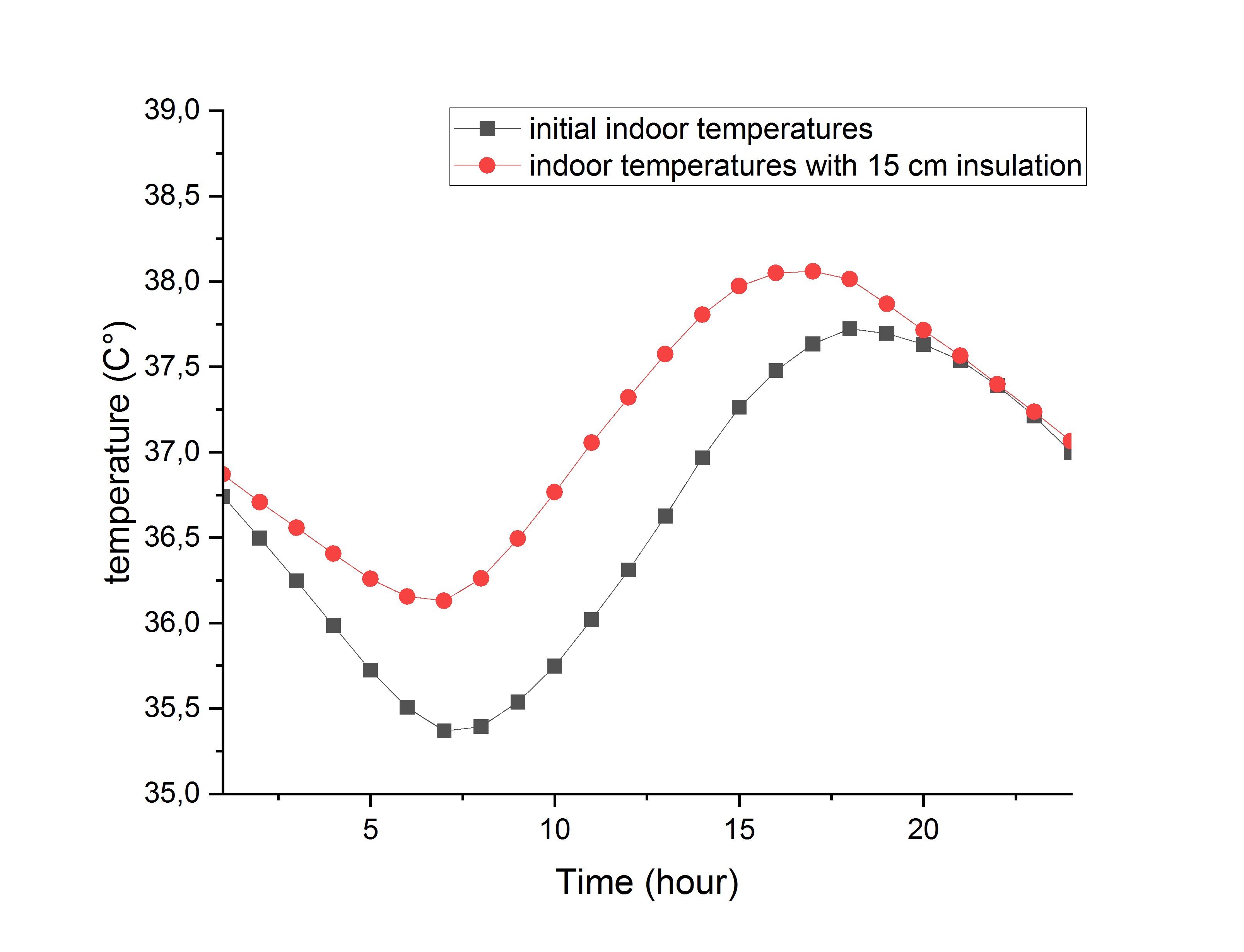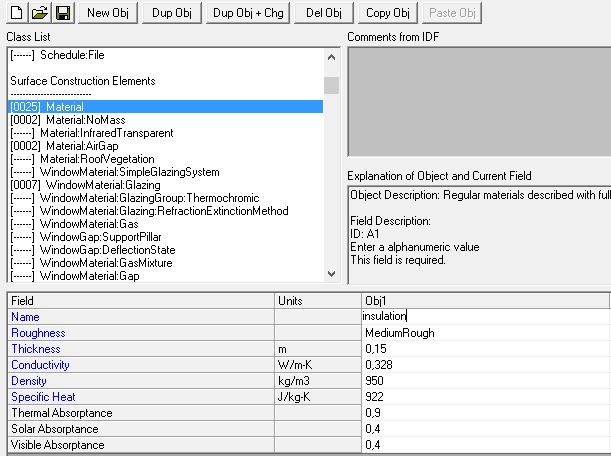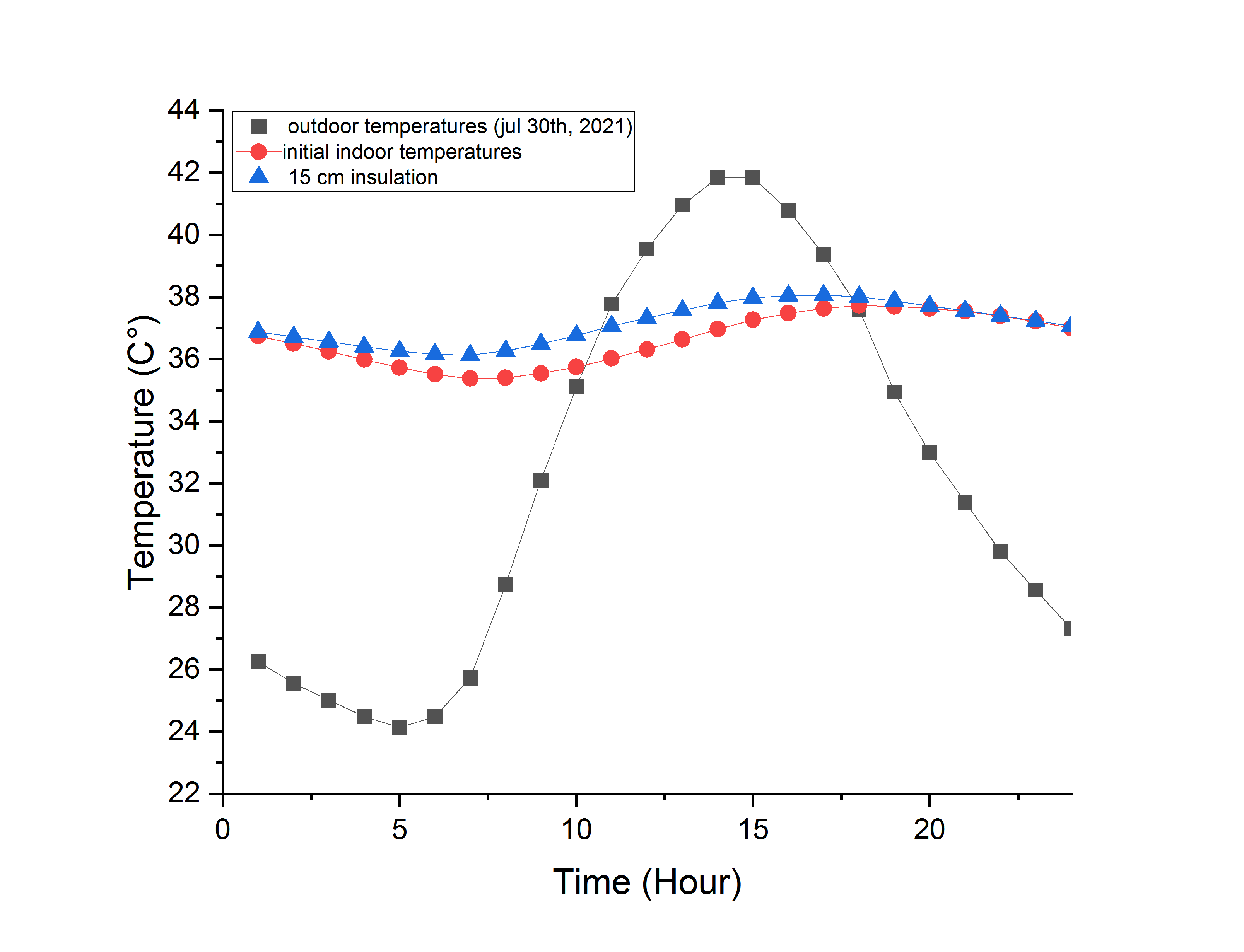indoor temperature does not decrease after adding insulation
Greeting
I am currently working on the thermal performance of the building envelope of residential buildings where I am using wall insulation as a passive strategy to solve overheating problems in the summer period to achieve thermal comfort. the building that I'm simulating using EnergyPlus is a multi-story residential building located in a dense urban setting. I tried adding building insulation material with their respective thermal properties like thermal conductivity, density, and specific heat, with different thicknesses ( 50 mm, 100mm, 150 mm, 200 mm) at the inner face of the external wall. The output of respective scenarios show that the thicker the insulation the more indoor temperature is getting increased while it supposes to decrease. What could be the probable reason?! image description
image description







@khadidja20 does the building have a cooling system for the summer, or is it a passive building (no HVAC)? Also, if you upload your model(s) with screenshots, charts, or other images to Dropox, Google Drive, etc. and share the URL here, others can view those and provide better help.
I wouldn't assume that going from 150 mm to 200 mm of insulation necessarily decreases indoor temperatures. If thermal bridging has been minimized, ~continuous 150 mm (@0.04 RSi/mm) is often more than adequate. If the main sources of heat are internal (appliances & lighting), direct solar (windows) or infiltration (hotter outdoors than indoors), then adding more insulation may be preventing radiative free cooling of opaque envelope (and in turn of indoor air) during overheating periods. But this depends heavily on climate (hot-dry vs hot-humid), thermal mass and night cooling, etc.
@ Aaron Boranian Actually it is a passive building. I shared a screenshot of the thermal characteristics of chosen material for insulation, it is a biobased composite elaborated from local resources for thermal rehabilitation . The initial wall thickness is 22 cm, which is built with hollow bricks (20 cm), with outside coatings (1 cm with cement mortar) and inside coatings (1 cm with plaster). which is a real case study in a hot and dry climate that requires enhancing thermal inertia as a solution for overheating in the summer period.
@khadidja20 it doesn't look like the image attached correctly, can you please try again?
@Aaron Boranian Thank you for your comment, I attached the images again.